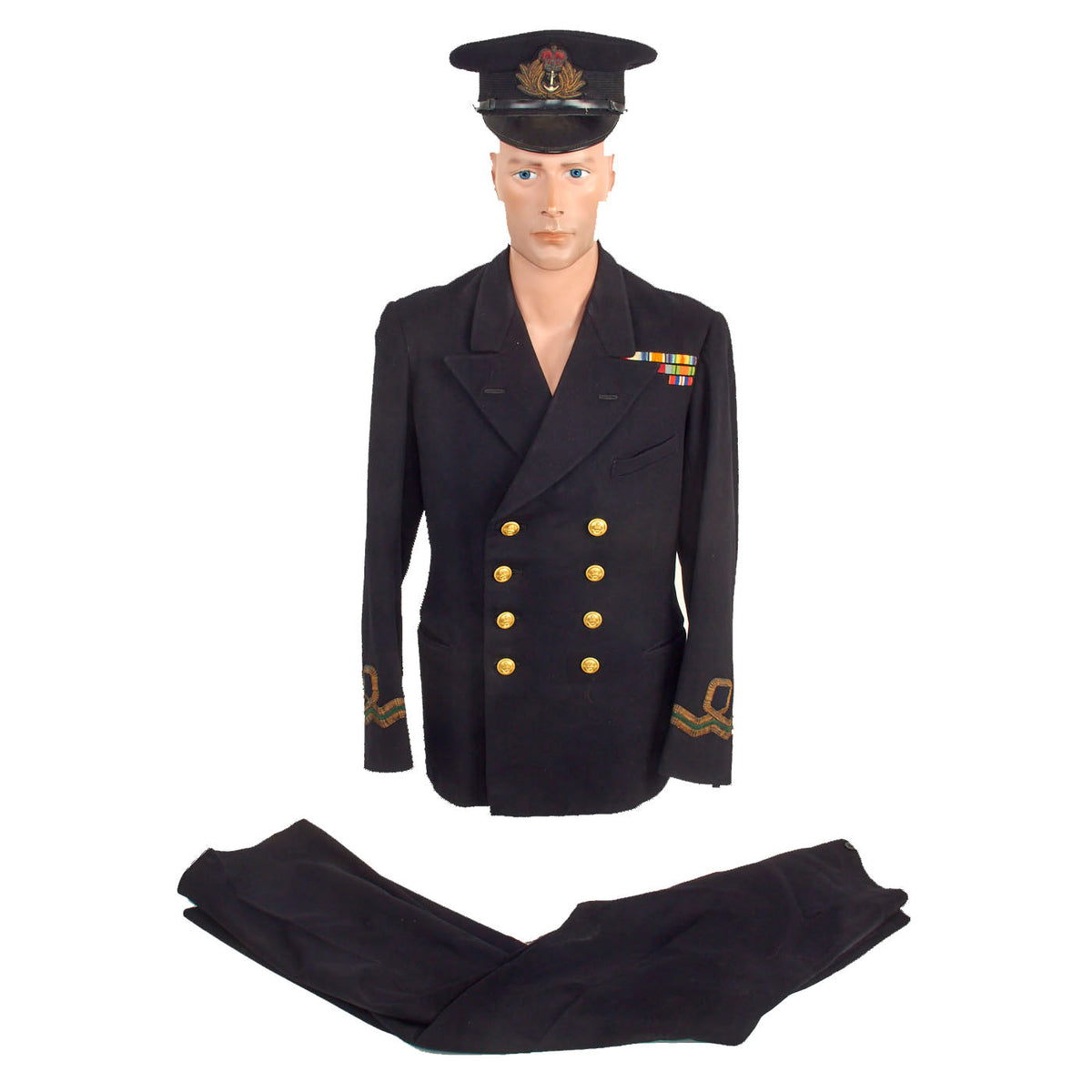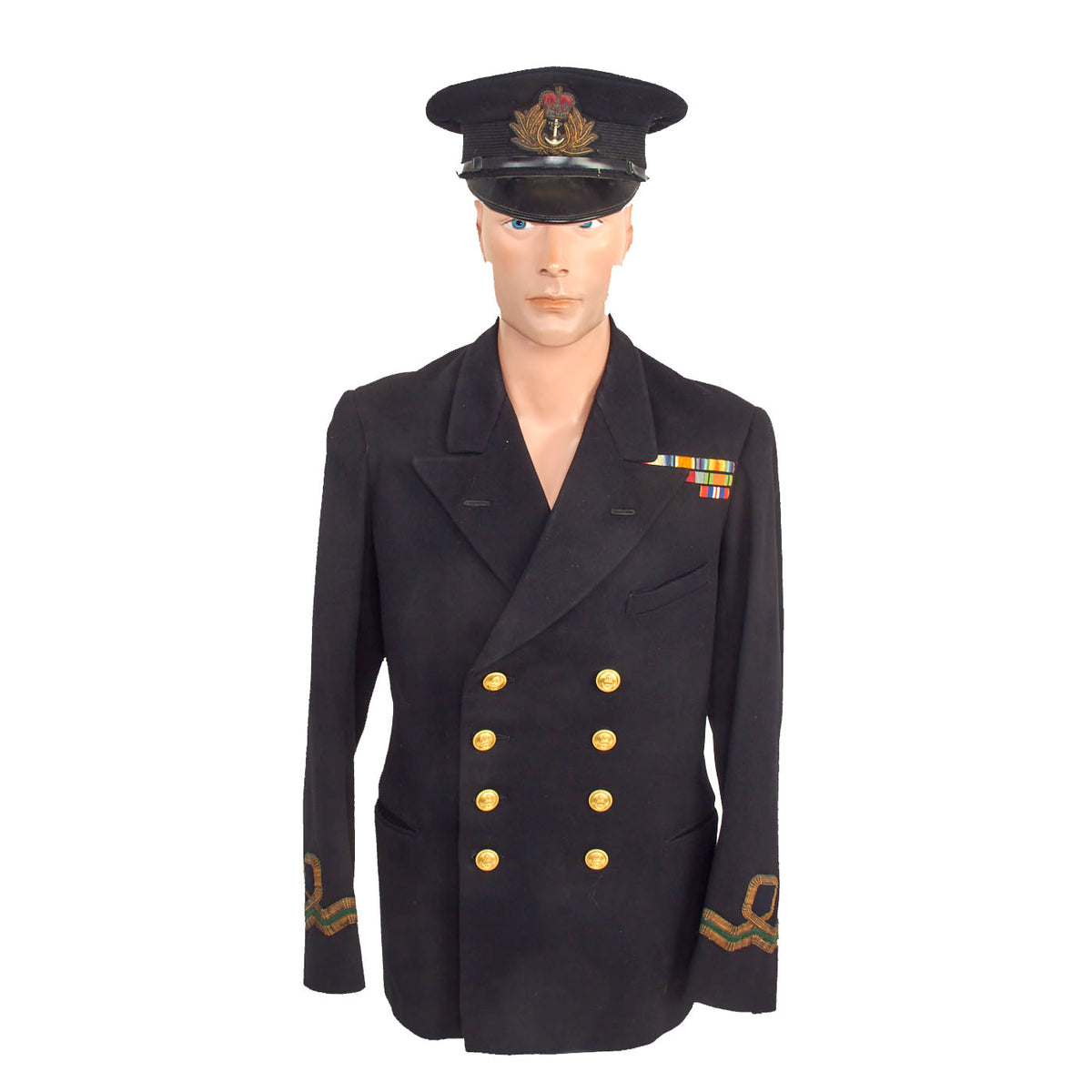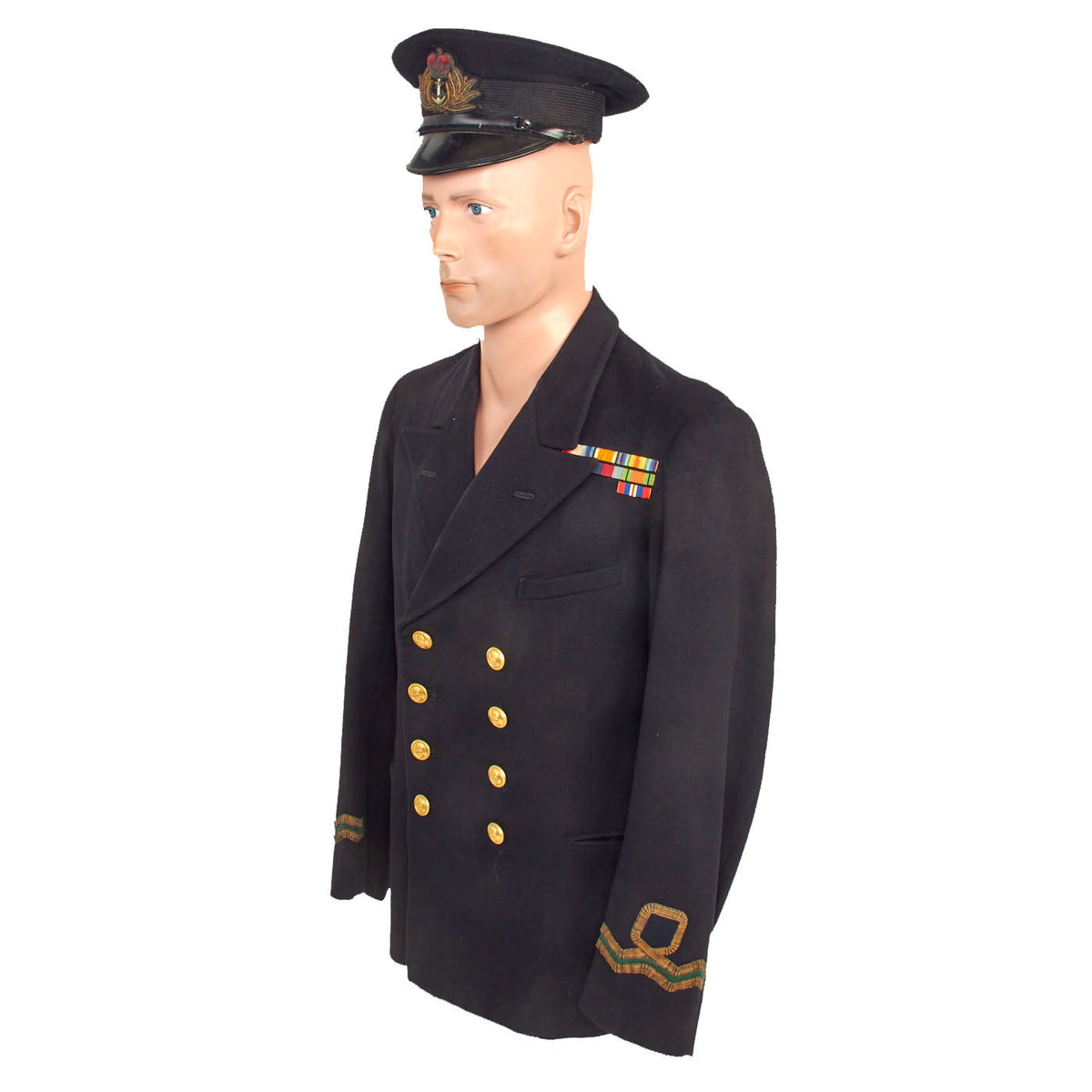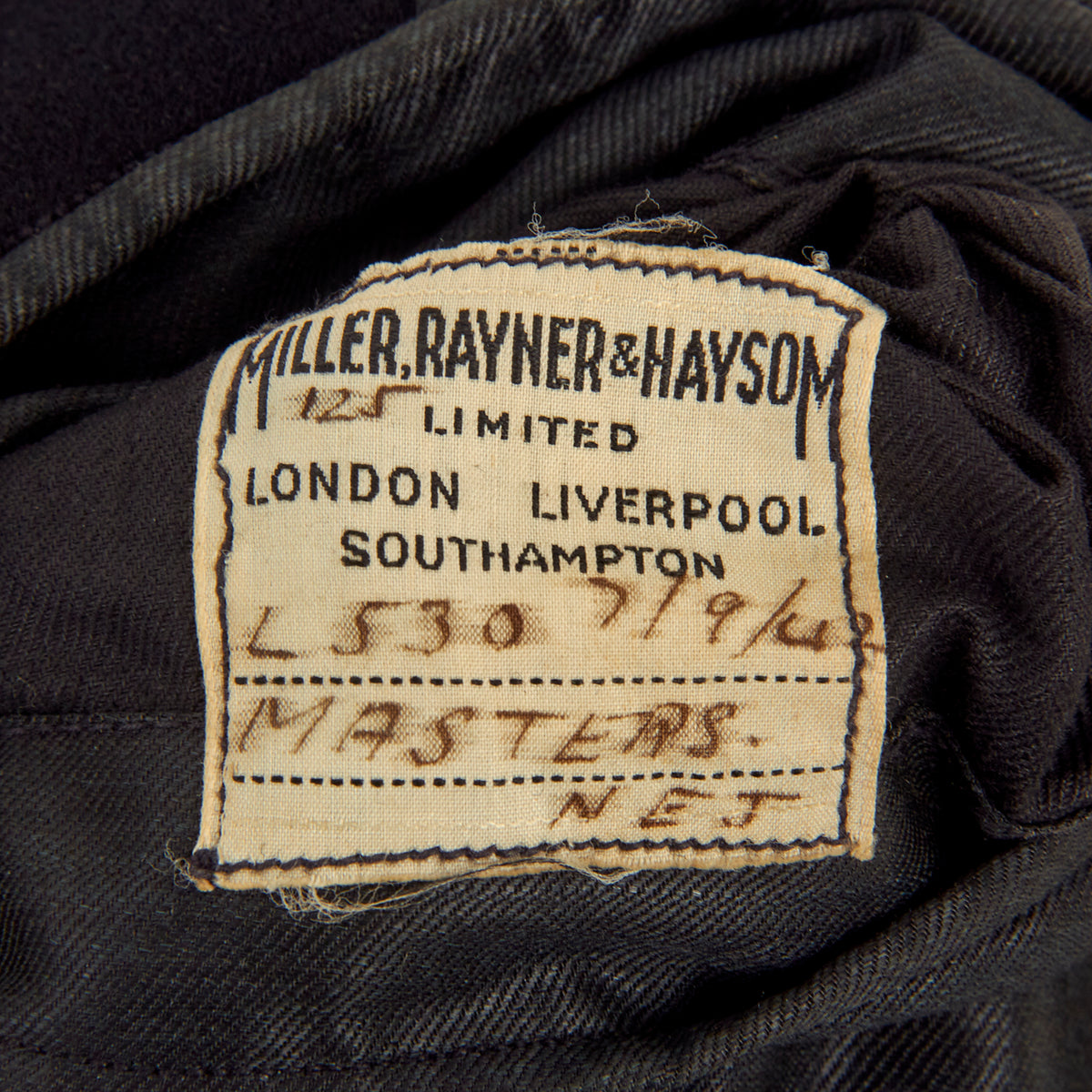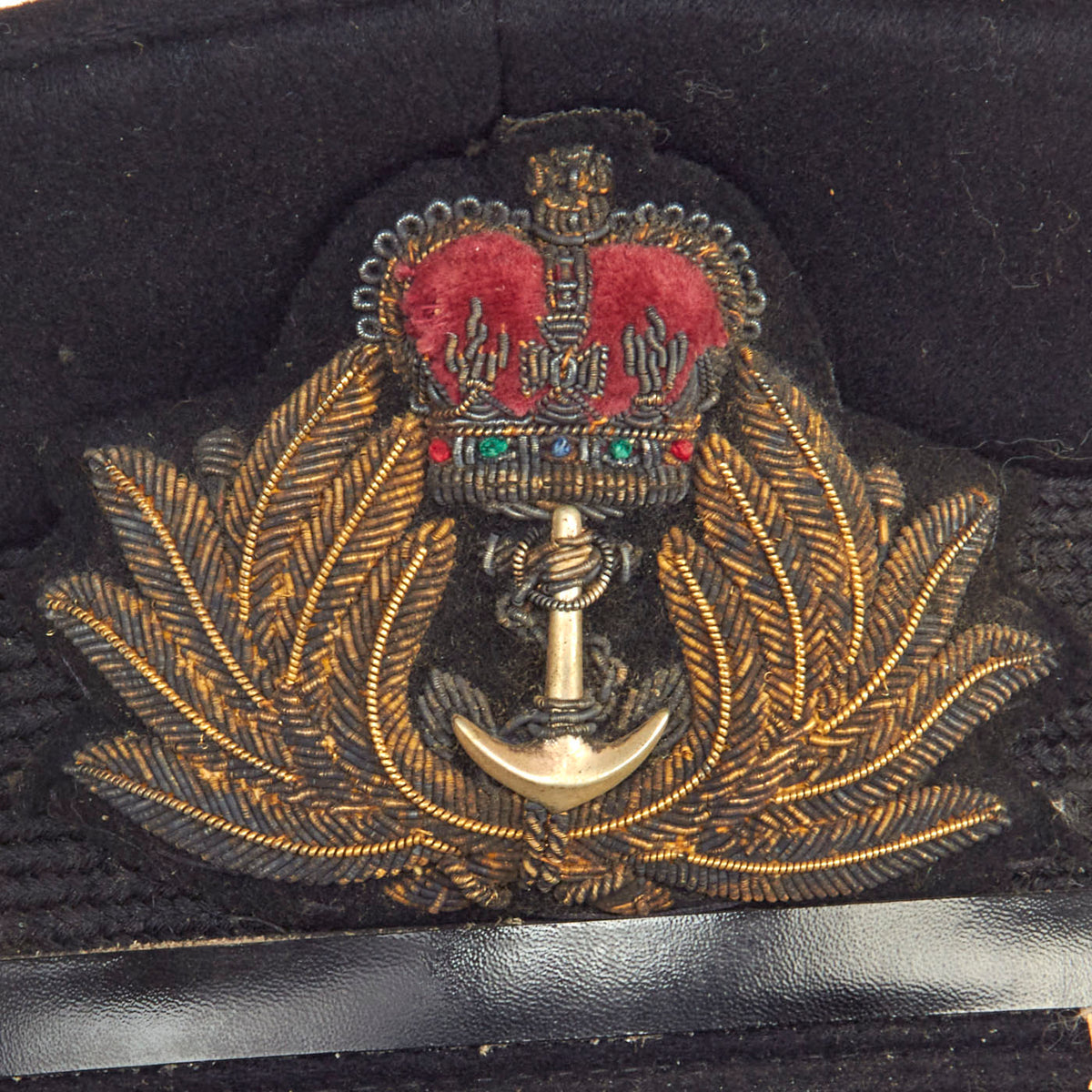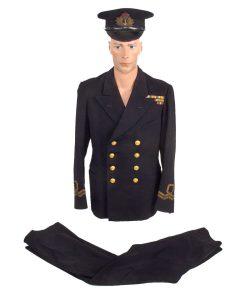Original British WWII Named British Royal Navy Pharmacist Reserves Officer’s Dress Blue Service Uniform Belonging to Veteran of Both World Wars – Reefer Jacket, Trousers and Visor Original Items
$ 325,00 $ 97,50
Original Items: Only One Set Available. This is a lovely example of a WWII British Naval Officers Dress Blue Service uniform which is named to a Lieutenant Masters. Masters was an officer with the British Royal Navy Reserves as a Pharmacist.
The Royal Naval Reserve (RNR) is one of the two volunteer reserve forces of the Royal Navy in the United Kingdom. Together with the Royal Marines Reserve, they form the Maritime Reserve. The present RNR was formed by merging the original Royal Naval Reserve, created in 1859, and the Royal Naval Volunteer Reserve (RNVR), created in 1903. The Royal Naval Reserve has seen action in World War I, World War II, the Iraq War, and War in Afghanistan.
On commencement of hostilities in the Second World War, the RN once again called upon the experience and professionalism of the RNR to help it to shoulder the initial burden until sufficient manpower could be trained for the RNVR and ‘hostilities only’ ratings. Again, RNR officers found themselves in command of destroyers, frigates, sloops, landing craft and submarines, or as specialist navigation officers in cruisers and aircraft carriers. In convoy work, the convoy commodore or escort commander was often an RNR officer. As in the First World War, the RNR acquitted itself well, winning four VCs.
This Uniform Set Consists of the Following Items:
– Royal Navy Officer’s Peaked Visor (Size 6 ½): The visor is in lovely condition and features a fantastic officers’ bullion insignia on the front. The cap was made by Hamilton Uniform Cap Company LTD. in Hamilton, Canada.
– Royal Navy Officer’s Blue No. 1C Reefer Jacket (With Ribbons) and Trousers: This is the formal uniform worn on ceremonial occasions. For all commissioned officers it consists of a double-breasted, navy blue reefer jacket with four rows of two buttons, matching trousers, white shirt, black tie, peaked cap, black socks, and black leather shoes. It is divided into 1A (with medals and bearing arms), 1B (same as 1A, but without arms), and 1C (with medal ribbons). Female personnel may wear skirts except when carrying a sword or rifle. It was originally introduced in 1889 and was initially known as the ‘undress coat’.
The uniform was manufactured by Miller Rayner and Haysem Ltd. of Liverpool, England. The reefer jacket is dated 1942 and has Lt. Master’s name and rank on the label in the interior pocket. The condition is fantastic and still retains the original cloth ribbons on the front left. The ribbons present on the uniform are as follows; 1914 Star, British War Medal, WWI Victory Medal, 1939-1945 Star, Defense Medal and War Medal.
Comes more than ready for further research and display.
Approximate Measurements
Collar to shoulder: 9.5”
Shoulder to sleeve: 26”
Shoulder to shoulder: 16.5”
Chest width: 20”
Waist width: 19”
Hip width: 20.5”
Front length: 31.5″
PANTS-
WAIST: 16″
INSEAM: 30″
Fast Shipping with Professional Packaging
Thanks to our longstanding association with UPS FedEx DHL, and other major international carriers, we are able to provide a range of shipping options. Our warehouse staff is expertly trained and will wrap your products according to our exact and precise specifications. Prior to shipping, your goods will be thoroughly examined and securely secured. We ship to thousands clients each day across multiple countries. This shows how we're dedicated to be the largest retailer on the internet. Warehouses and distribution centres can be located throughout Europe as well as the USA.
Note: Orders with more than one item will be assigned a processing date depending on the item.
Before shipping before shipping, we'll conduct a thorough inspection of the items you have ordered. Today, the majority of orders will be delivered within 48 hours. The delivery time will be between 3-7 days.
Returns
The stock is dynamic and we cannot completely manage it because multiple stakeholders are involved, including our factory and warehouse. So the actual stock may alter at any time. It's possible that you may not receive your order once the order has been made.
Our policy is valid for a period of 30 days. If you don't receive the product within 30 days, we are not able to issue a refund or an exchange.
You can only return an item if it is unused and in the same state as the day you received it. You must have the item in its original packaging.
Related products
Uncategorized
Uncategorized
Angolan Rebel 1970s era 60mm Inert Display Mortar from Angolan Civil War Original Items
Uncategorized
Uncategorized
Uncategorized
Uncategorized
Armored Burgonet Helmet & Polearm from Scottish Castle Leith Hall Circa 1700 Original Items
Uncategorized
Uncategorized
Uncategorized
Uncategorized
Uncategorized
Uncategorized
Uncategorized
Uncategorized
Uncategorized
Uncategorized
Uncategorized
Uncategorized
Band of Brothers ORIGINAL GERMAN WWII Le. F.H. 18 10.5cm ARTILLERY PIECE Original Items
Uncategorized
